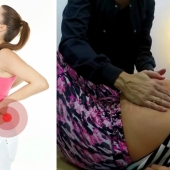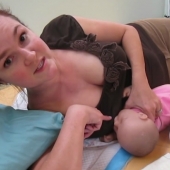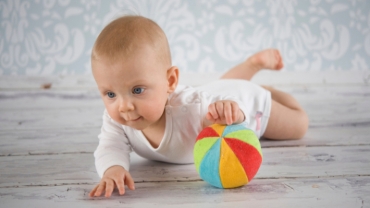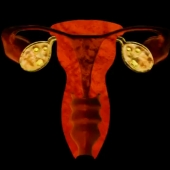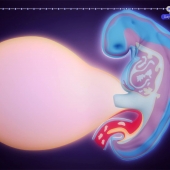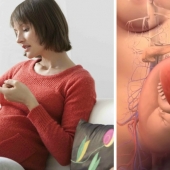Before the baby is born, it passes the membrane of the uterus the cervix, the mouth of the uterus and the birth canal. Labour mostly starts with the opening and widening of the cervix.
This goes together with contractions to make the tissues around the cervix softer and thinner. The waters might have already broken by then but that can also happen in a later stage of labour.
The contractions are usually irregular in the beginning and not very painful yet. In the course of time the contractions become more frequent and stronger.
The cervix needs to be 10 centimeters dilated before the baby can pass. During the final centimeters of dilation the contractions are the strongest. The duration of the dilation differs from woman to woman the position of the baby and the number of childbirths somebody has had before.
When the cervix is fully dilated, the pushing phase starts. This is when the baby needs to be pushed down the birth canal. The dilating contractions shift into expulsion contractions.
With a cephalic presention the baby usually comes out head first and face down. If the buttocks come first, the baby is breach. After the baby's head is delivered, the shoulders still need to come out.
If you look at the widest point the head is at right angles to the baby's shoulders. So the baby has to take a quarter turn to let the sholulder be delivered. The doctor or nurse helps with the turning of the child.
Once the baby is born, the afterbirth follows. The placenta and the membranes still need to come out. The uterus will contract so that the placenta peels away from the wall of the uterus.
The mother will be asked to pushone more time to get the placenta out and labor is done. When there is no more tangible heartbeat in the umbilical cord, it can be snipped.
About video: This animation shows what exactly happens in the body of the mother during natural childbirth. The whole process will be described: from the first contraction to the afterbirth.
- 7062 views

